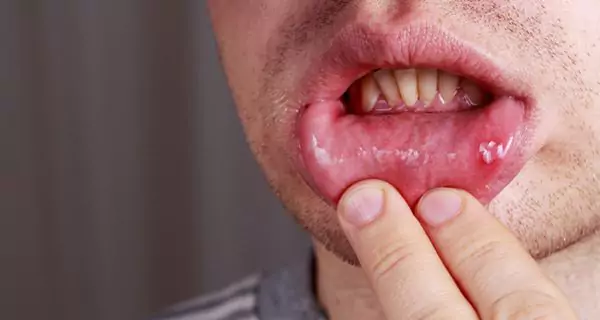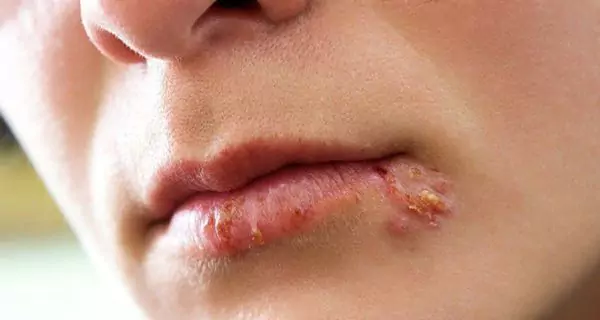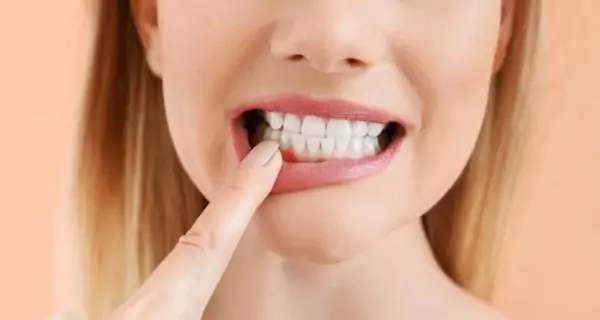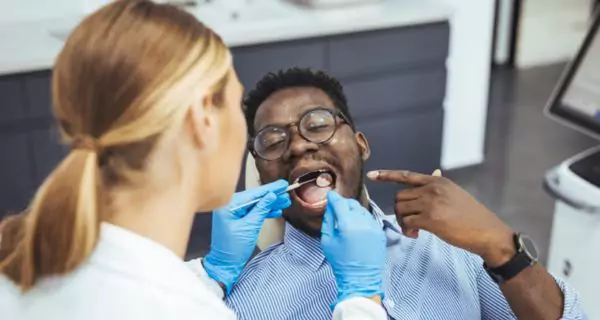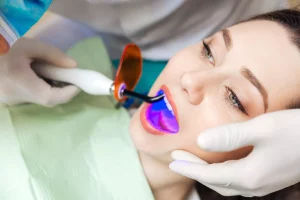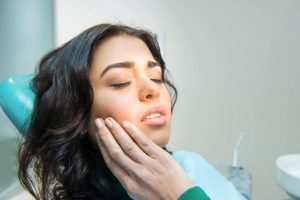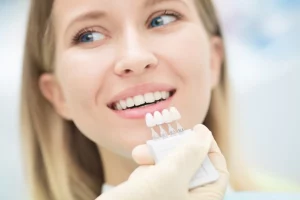When we talk about sexually transmitted diseases (STDs), we usually focus on the sex organs or the reproductive system. But did you know that symptoms of STDs in the mouth are quite common? While not all STDs show up orally, many of them can, and in some cases, oral symptoms appear before anything else. Your dentist might be the first person to spot an STD, even before your doctor does.
From painful sores to inflamed gums, your mouth might be trying to tell you that something more serious is going on, and it’s time we start paying close attention.
In this article, we’ll explore the most common signs of oral STDs, how they can affect your oral health, and why your dentist might be the first to notice when something isn’t quite right.
What are STDs in the mouth?
STDs can—and often do—affect the mouth, especially through oral sex. In some cases, even kissing can transmit an infection, particularly if one partner has active sores or cuts in the mouth.
Oral symptoms of STDs may appear as cold sores, white patches, ulcers, or red spots. Sometimes the signs are much more subtle: persistent bad breath, bleeding gums, or even a metallic taste. These symptoms are easy to overlook or mistake for something harmless, like irritation from food or a common canker sore. But they’re not always so innocent.
How oral STDs are transmitted
STDs don’t always need obvious wounds or symptoms to spread. Many oral infections happen quietly, without pain and warning. So, how exactly do these infections enter the mouth? Here are the most common ways it can happen:
• Oral-genital contact (oral sex): the most common transmission route for mouth-related STDs.
• Kissing someone with active sores: especially risky in the presence of open lesions from herpes or syphilis.
• Sharing utensils, lip balm, or toothbrushes: can transfer bacteria or viruses if infection is active.
• Small, invisible cuts or tears in the mouth: caused by brushing too hard, flossing, or eating sharp foods.
• Weakened immune system: makes it easier for infections to take hold and spread.
• Side effects of certain medications: Some treatments cause dry mouth or tissue thinning, increasing the risk.
• Asymptomatic transmission: A person can carry and transmit an STD even without visible signs or symptoms.
The most common STDs that appear orally and their symptoms
Not all sexually transmitted diseases (STDs) show up in obvious ways, and when they do, the symptoms often appear in the mouth before anywhere else. Some are painful, others are easy to miss, and many are mistaken for everyday issues like gum irritation or canker sores. Your mouth might be trying to alert you to something deeper.
Here’s a closer look at the most common STDs that affect the mouth, and the signs they may leave behind:
Herpes Simplex Virus (HSV-1 and HSV-2)
• HSV-1 is the type most people know as cold sores or fever blisters. These typically appear around the lips, often triggered by stress, illness, sun exposure, or a weak immune system.
• HSV-2, usually associated with genital herpes, can also affect the mouth through oral sex. It can cause lesions that are clear, pink, red, yellow, or gray, which may become painful when eating or swallowing.
Outbreaks tend to heal on their own within 7 to 10 days, but they can recur over time.
Human Papillomavirus (HPV)
HPV can lead to small, wart-like growths inside the mouth or throat. In some cases, it causes white or red patches that don’t go away easily and might resemble harmless irritations. Certain high-risk strains are linked to oropharyngeal cancers, particularly with long-term infections.
Syphilis
A bacterial infection, it often starts as a painless sore (chancre) on the lips, tongue, or inside the mouth. If untreated, it can progress into larger, red patches, rashes, and painful lesions. It may also cause inflamed or bleeding gums that mimic gum disease.
Thankfully, syphilis is highly treatable in its early stages with antibiotics.
HIV
It has a low risk of oral transmission, usually only if there’s an open wound in the mouth. It doesn’t directly cause oral sores, but it does weaken the immune system, increasing the risk of oral thrush, gum disease, and slow healing.
Each of these conditions requires medical attention, not just to ease the oral discomfort but to address the larger health issue it points to.
Other common oral symptoms of STDs in the mouth
In addition to the condition-specific signs above, some general symptoms may point to an STD-related issue in the mouth:
• Mouth sores or ulcers: Sores that don’t heal within two weeks, especially if they keep coming back, could signal an underlying infection. These may appear on the lips, tongue, cheeks, or palate; they sometimes bleed or cause pain while eating.
• Red, white, or discolored patches: Often caused by HPV or syphilis, these patches might seem harmless at first, but could be early warning signs of something more serious. A dentist may recommend biopsy or further testing if they persist.
• Swollen or bleeding gums: More than just skipping floss, gum inflammation and bleeding could be due to HIV or syphilis, especially when standard dental care doesn’t improve the condition.
• Chronic bad breath or unusual taste: A metallic or bitter taste, along with persistent halitosis, may result from bacterial imbalances related to an STD or from side effects of treatment.
If you notice anything strange in your mouth that doesn’t clear up, make sure to see a professional.
When to see a dentist or doctor
If something in your mouth feels off, whether manifested pain, patches, swelling, or a sore that won’t go away, it’s worth having it checked. These symptoms may seem small, but they can be your body’s first clue that a larger health issue is at play.
Oral STDs can worsen quickly if untreated, but early detection makes treatment much easier.
You shouldn’t ignore signs as:
• ulcers or sores that last more than 10 to 14 days
• pain when eating, brushing, or speaking
• swelling or bleeding that seems unusual or doesn’t improve
• persistent dry mouth, bad breath, or a strange taste
If something feels off, your dentist or doctor can help you get answers and the right care.
Why your dentist might spot it first
Most people think of dentists as the go-to for cavities and cleanings, but they’re also trained to recognize early signs of infections, autoimmune diseases, and yes, even STDs.
During a routine dental exam, your dentist checks more than just your teeth. They examine your gums, tongue, cheeks, throat, and the roof of your mouth, looking for abnormalities you may not even feel. A small white patch or a tiny sore might not seem like much, but to a trained eye, it could be a sign of something more.
In fact, dentists have often been the first healthcare professionals to detect early symptoms of syphilis, HPV, or even HIV, especially when those signs show up in the mouth before anywhere else.
What to expect during an oral exam
If your dentist notices something unusual, they might:
• take a closer look or photograph the area
• recommend a biopsy or refer you to a specialist
• ask about your medical and sexual history to better understand risk factors
Don’t worry, these conversations are handled with care, discretion, and full respect for your privacy. Your health information is protected by law, and your dentist’s goal is to help you get the care you need.
Oral care tips for people managing STDs
If you’ve already been diagnosed with an STD, it doesn’t mean that your smile has to suffer. With the right care and habits, you can protect your oral health and lower the risk of complications.
Prioritize gentle, consistent oral hygiene
• Use a soft-bristled toothbrush.
• Brush twice a day and floss once a day, even if you’re feeling uncomfortable.
• Switch to alcohol-free mouthwash to avoid stinging sensitive areas.
• Avoid spicy, hot, or acidic foods if you have active sores.
Even during flare-ups, keeping your mouth clean helps speed up healing.
Choose products that support healing
• Use fluoride toothpaste to protect enamel.
• Moisturizing mouth sprays or gels can help if your medications cause dry mouth.
• Some dentists may recommend probiotic lozenges or prescription rinses to restore oral balance.
Be honest with your dentist
There’s no shame in sharing your concerns. If you’re experiencing symptoms or have been diagnosed with an STD, let your dentist know. It helps them provide better, more personalized care and will keep your treatment on the right track.
Conclusion
STDs in the mouth are more common than people think, and they’re often overlooked. Your mouth may be one of the first places to show signs of a deeper health issue. That’s why oral health and sexual health go hand in hand.
Routine dental visits aren’t just about your teeth; they’re a powerful tool for catching silent infections before they spread or become dangerous. Whether you’re actively managing an STD or just want to stay ahead of your health, your mouth deserves just as much attention as the rest of your body.
So, the next time something feels off in your mouth, don’t brush it off. Book that dental appointment. Protecting your smile might just be the first step in protecting your life.
Frequently Asked Questions (FAQ)
References
1. Mayo Clinic Staff. (2023, 8 September). Sexually transmitted diseases (STDs). Mayo Clinic. https://www.mayoclinic.org/diseases-conditions/sexually-transmitted-diseases-stds/symptoms-causes/syc-20351240
2. MouthHealthy. (s. f). Sexually transmitted diseases and your mouth. MouthHealthy – Oral Health Information From the ADA. https://www.mouthhealthy.org/all-topics-a-z/sexually-transmitted-diseases
3. Scassia, A., Ferguson, S. (2023, 05 May). Oral STDs: What Are the Symptoms?. https://www.healthline.com/health/healthy-sex/oral-stds
4. Sissons, B. (2024, 25 January). What STDs can you get from oral sex?. Medical News Today. https://www.medicalnewstoday.com/articles/325345

